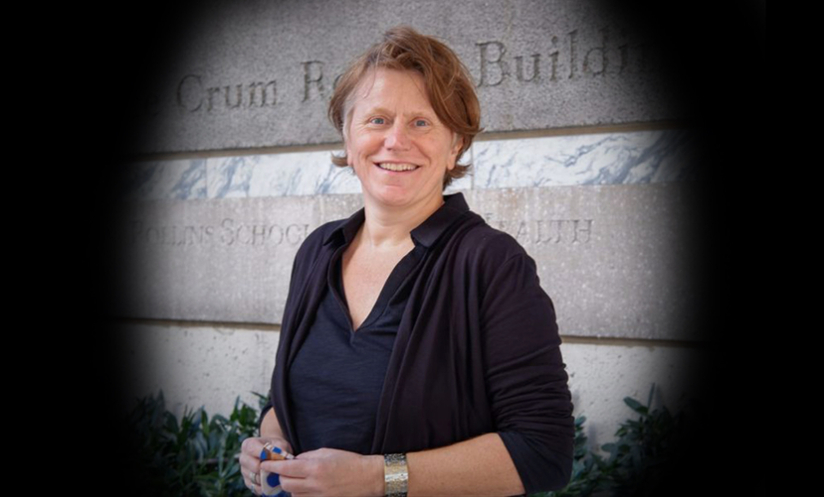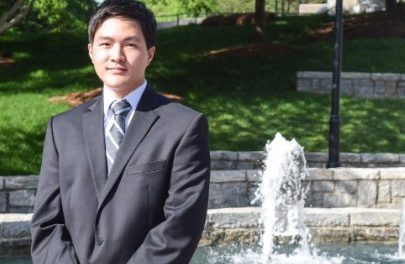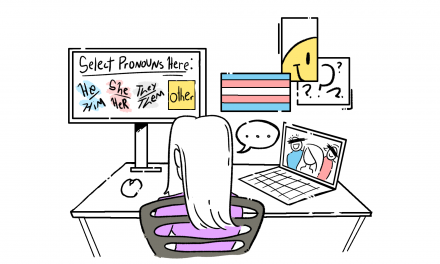Professor of Translational Epidemiology Anna Caecilia Josephina Wilhelmina Janssens, who loved ones said went by Cecile, died on Sept. 8 at 54 years old after a three-month battle with acute leukemia. From the start of her diagnosis to the end, Cecile maintained a positive mindset, her brother, Hans Janssens, said. She wouldn’t let anyone who was visiting her cry.
Friends and peers remember Cecile for her rigorously analytical mind, devotion to private and public scholarship and “outstanding persona.”
The epidemiologist hailed from Oisterwijk, a small town in the Netherlands. She was the oldest of three in a family Hans Janssens described as “rather traditional.”
“In the Netherlands, we say, ‘act normal, as that’s crazy enough,’” Hans Janssens said. “But Cecile was never normal. She was extraordinary as a person from as early as I can remember.”
As a child, Cecile was creative, intelligent and very stubborn, Hans Janssens said. She was always willing to engage in political debate and could be very competitive. The three siblings, along with their two cousins, spent most of their days playing outside, with Cecile leading the pack.
When Cecile was about ten years old, her mother died from breast cancer, an event that changed the course of Cecile’s life,Hans Janssens said.
Cecile underwent genetic testing for breast cancer annually for the rest of her life, her brother said, so when she was diagnosed with leukemia, she said she wasn’t scared.
“‘I’ve lived with the idea of cancer all of my life,” Cecile said to Hans Janssens.

Professor of Translational Epidemiology Cecile Janssens served the Emory community for nearly a decade. Photo courtesy of Emory University
Grieving her mother’s death made Cecile “restless,” Hans Janssens added.
She made steps that were “unthinkable” for her parents’ generation, coming from a family of craftsmen. Cecile traveled across the world, ran six marathons and made a career for herself. She acted, Hans Janssens argued, as if she had to compensate for the lost life of her mother.
Cecile was part of the first generation of her family to go to college, but she pushed even further, welcoming the opportunity to work at Emory University with “both hands.”
“It was part of an adventure, but also part of a quest to herself to prove who she was, who she wanted to be, to find her purpose in life,” Hans Janssens said.
Cecile found that purpose in Atlanta, according to Hans Janssens. She left the Netherlands with an ambitious and competitive personality, but when she came back nearly a decade later, she was “warmer” and “much milder.” Cecile was less interested in advancing her career, and more intrigued by teaching students and writing.
She traveled back to the Netherlands to be closer to family, but she also received a unique opportunity — on June 22, 2022, she was nominated to the Netherlands Scientific Council for Government Policy, a small council with seats reserved for the foremost experts in scientific fields. Hans Janssens said that his sister was very excited to work on the council and help develop Dutch policy.
Emory community members remember her as a uniquely empathetic and engaging scientist whose care for peers and students never interfered with her ability to engage in academic debate.
Critical examination of popular medicine
Cecile’s latest academic focus was critically examining scientific communications, Timothy Lash, chair of the department of epidemiology at the Rollins School of Public Health, said. In spring 2020, Cecile created a class called Critiquing Health News (HLTH 279) as part of her work founding the epidemiology focus in the human health major, Lash added. The class delves into health research in public news and analyzes how data can be manipulated to prove political points, Maya Degnemark (25B), who took the class in fall 2021, explained.
Degnemark said that Cecile taught her that scientific truths were “never as they seem.”
“Don’t just believe things because one person told you, but look up an article and read about it, which is definitely a lesson I’ll bring with me everywhere,” Degnemark said.
Degnemark added that Cecile created a respectful and open environment in the classroom, where it felt OK to be wrong.
“It’s very rare to find an open environment in college courses like that, where you can truly just be who you need to be, and say what you want to say and still be respected,” Degnemark said.
There are no known plans to install a new instructor for the Critiquing Health News class, Lash said.
Cecile’s desire to dispel medical myths extended beyond the classroom: she wanted to have a public presence, former University President Claire Sterk, who is now a Charles Howard Candler professor of public health, said.
Like many other scientists, Cecile was frustrated with the obscurity of scientific research and wanted to improve science communication for the public, Sterk said. So, she participated in the inaugural cohort of the Public Voices Fellowship in 2012 as part of a “personal mission” to make science more accessible. The program teaches faculty how to communicate academic knowledge with the public.
At first, Cecile had difficulty learning how to tailor academic jargon for public comprehension, Sterk said, explaining that Cecile was frustrated by being confined to fewer words and a simpler vocabulary. However, when Cecile first learned to use social media sites, Sterk said it was like “a kid in a candy shop.”
“She realized, ‘I can reach lots of people very easily, and I don’t have to write a 10-page paper to make the case or do a beautiful editorial,’” Sterk said.
She took to her Twitter page, which has over 11 thousand followers as of Jan. 29, to comment on health news, sometimes even engaging in debate with other Twitter users. Her goal in utilizing social media spaces, as Cecile once told The Scientist, was to bring “poor methodology in the spotlight.”
Cecile became a “superstar” at communicating scientific information in an accessible way, Sterk said.
“She could take the most complex issue and turn it not only into something that was exciting, but also for people to understand how the different pieces come together, how to connect the dots,” Sterk said. “In her own way, she really empowered people to not just be good academically, but also to have the social responsibility of making that knowledge available.”
At the time of her death, Cecile was working on a book — titled “An Epidemiologist Reads the News: Why Health Reportage May Not Be as Healthy as You Think” — about public health communication, according to Associate Professor of Global Health Solveig Cunningham. The Science Factory, a literary agency, described the book as a “smart, witty and revealing book [that] will prove to be your essential guide to navigating this media minefield.”
Hans Janssens said that the book was 99% done, and that only the final details needed to be added. He is in contact with the book’s publishers, who are currently still deciding whether to publish the book.
“I hope it will be published as her legacy, as a monument for her ideas,” Hans Janssens said.
Early career
Cecile’s career, however, did not begin anywhere near health communication — it was “just something she took an interest in,” according to Lash. He said that this “really speaks to her intellect and her passion for chasing down ideas.”
Her career began as a psychology postdoctoral student at Erasmus University Rotterdam in the Netherlands, where Cecile researched the use of genetic information to prevent disease risk, which she criticized. Cecile was particularly skeptical of polygenic risk scores — a number that tallies up variants in an individual’s genome to predict their risk of developing a disease. This skepticism pushed Cecile to publish a letter in 2004 critiquing the Centers for Disease Control and Prevention’s (CDC) research methods in an article on risk prediction using genetic testing.
CDC officials were so impressed by her letter that they offered her a six-month role as a visiting researcher in 2005, during which she published multiple articles on commercial health-risk DNA tests.
The young, sharp Dutch postdoctoral student with red hair, a trenchcoat and cowboy boots was beginning to make a name for herself.
When Emory invited Cecile back to Atlanta in 2012 as a professor of translational epidemiology, she had already become well-known among Dutch public health circles for her epidemiological work. After some time in the United States, she naturally began acquiring similar fame, writing for The New York Times, HuffPost, Wired, The Chronicle of Higher Education and The Conversation.
Throughout her career, Cecile received multiple research grants, and was “very well funded,” Cunningham said. However, Cunningham added that like many professors, Cecile experienced a slump in her research a few years into her professorship at Emory.
“When she went through a period like this, she was really cool about it,” Cunningham said. “She said, ‘You know, I’m not going to scramble to write a whole bunch of grants that aren’t very meaningful.’”
Cecile took a step back from research and stopped writing grants so she would have time to think “unencumbered by the hamster wheel,” Cunningham said.
During this period, Cecile developed the idea of a different way of finding scientific literature and potential collaborations within a specific realm. While researchers often look for single articles that are relevant to their study, she was more interested in co-citations, the frequency with which two articles are cited together in the reference lists of other articles.Articles that are often cited together tend to be on similar topics, and denote a more specific query of interest than a singular article does.
She began materializing what would eventually become CoCites, a patented project that allows researchers to perform co-citation searches. She developed a web-enabled version of the project with Emory’s Technology Transfer Office, so users could download a free plug-in that would produce similarity scores of various articles, Lash said.
“She ended up getting a lot of funding for it as well as making an impact in science, and it took her in this new direction of communications in science, and led her to make more interesting contributions,” Cunningham said.
The site was discontinued after Dec. 31, 2022 due to Cecile’s death.
Cecile’s response to her personal slump was unusual, and inspired Cunningham to think about success in an idiosyncratic way.
Cunningham attributed this mentality to Cecile being academically trained in the Netherlands, which has a different educational system than the United States. Sterk, who is also Dutch, echoed this distinction, noting that Dutch education is “less structured.”
“There was a lot of emphasis, at least in our education, on doing things independently and then getting together and sorting things out through debate,” Sterk said.
These interdisciplinary forums fostered a less rigid method of scholarly thought than in the United States, Sterk said. Rather than churning out research in one academic field, scholars are encouraged to think more broadly on the impact of their work.
However, Sterk added that Cecile had a unique curiosity that transcended her training. When a group believed they had explored everything there was to know about a problem, Cecile would invariably find some new complexity to work through.
A loving friend
Outside of work, Cecile was always observing the world around her. Sterk recalled several eccentric conversations she had with Cecile about why grocery stores were sized the way they were or why people bought certain brands of cereal.
“In that context, she was brilliant … because she would see patterns that most people wouldn’t see,” Sterk said.
Cecile’s ceaselessly analytical mind filled every room she was in, Lash explained.
“You could have a scientific discussion with her and she would argue you into submission and you would thank her for it,” Lash said.
However, Sterk said that Cecile wasn’t the type of person to only have academic conversations. She explained that they were able to share a good sense of humor, one filled with “making the sort of jokes to be a little cynical about some of the things that other people might take, from our perspective, a little bit too serious.”
The professor also took care to foster community within the epidemiology department, Lash highlighted. She attended every gathering and faculty meeting, making her an “exemplary” colleague. One could always feel her presence during these meetings due to her high levels of engagement, underscoring her “very rare persona” in academia, Lash said.
Cecile was also always there for the people closest to her. Cunningham described going to her for a fresh perspective on career advice, while Sterk said that Cecile could anticipate her colleagues’ needs and worries, and would offer her help even before they asked.
“She cared a lot, honestly, about other people,” Sterk said. “You couldn’t ask for a better friend.”
News Editor | Eva Roytburg (she/her, 23Ox) is from Glencoe, Illinois, majoring in philosophy, politics and law. Outside of the Wheel, Roytburg is an avid writer of short fiction stories. In her free time, you can find her way too deep in a niche section of Wikipedia.





